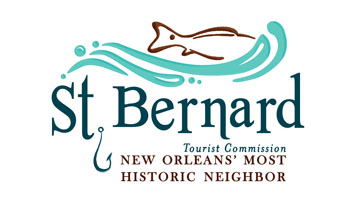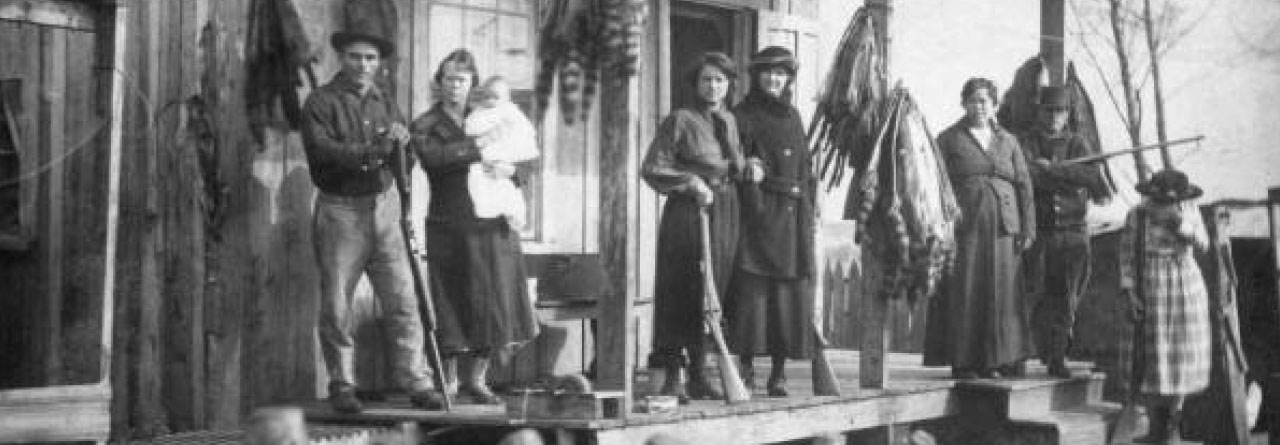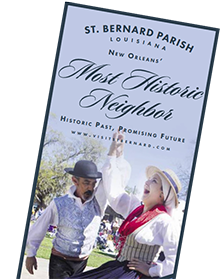Beginning in the 1300s, kingdoms in the Iberian Peninsula (predating the establishment of the Kingdom of Spain) began searching for gold and other mineral wealth to enrich their realms. King Henry of Castille commissioned Jean de Bethancourt to explore and colonize the Canary Islands, which he began with the conquest of Lanzarote Island in 1399 and ended with the conquest of Tenerife in 1496. The Canaries became the first colonial territory of the Spanish Empire.
Christopher Columbus' last stop before discovering the New World was Las Palmas de Gran Canaria. Because of their geographic location, the Canaries became the unquestioned gateway to the Americas throughout the period which sailing craft dominated the seas. The islands, situated off the African coast were located at about one-third the distance along the sailing route to the West Indies and are the last land mass lying between Europe, Africa and the Americas. The Canarian chain consists of thirteen islands of which seven are inhabited. St. Bernard was settled by colonists from each of the inhabited islands which are named Fuerteventura, Lanzarote, Gran Canaria, Hierro, Tenerife, LaPalma and Gomera.
The Canary Islands became a proving ground for policies, which were utilized in the administration of the Spanish Empire. Slavery and the cultivation of sugar cane were introduced to the Americas through the Canaries. Canary Islanders or Isleños formed the vanguard of colonists in colonization programs throughout the Spanish Empire. Canarians settled in Cuba, Venezuela, Puerto Rico, Paraguay, Santo Domingo, the Philipine Islands and other areas throughout the Spanish Empire. Colonists predominately from Gran Canaria founded San Antonio, Texas in 1731.
France ceded Louisiana to Spain and Great Britain in 1766 following the French and Indian War. Spain acquired that part of Louisiana lying west of the Mississippi River and the Island of Orleans, an area east of the Mississippi including New Orleans. Early in the 1770's Spanish officials learned that the British were planning to invade and occupy the Province of Louisiana, using the province as a base from which to attack Mexico and deprive Spain of the vast deposits of Mexican silver and gold. The British attempted to realize their plans almost fifty years later during the Battle of New Orleans. Consequently, Spanish administrators started developing Louisiana as a barrier between Mexico and the British colonies east of the Mississippi River. Reacting to successful British colonization efforts along the Gulf Coast in British West Florida, Spain settled thousands of immigrants from Malaga and the Canaries, as well as Acadian refugees, in Louisiana. The settlers came to Louisiana to increase production of food, populate the province and defend it against the projected British invasion.
The first Isleños arrived in Louisiana during 1778 and continued to arrive in the province until 1783. They were settled in four locations, strategically placed around New Orleans to guard approaches to the city.
Galveztown, situated just below Baton Rouge, was the first settlement. The others were Valenzuela, located along Bayou Lafourche; Barataria, located along Bayou des Familles in Jefferson Parish; and La Concepcion, later San Bernardo, located in St. Bernard Parish along Bayou Terre-aux-Boeufs. A fifth settlement for Bayougoulas was planned, but never completed.
Isleños fought against the British during the American Revolution through their service in the Galvez Expedition. Militiamen from the four Isleño settlements, including San Bernardo, participated in the three major military campaigns (Baton Rouge, Mobile and Pensacola) of the expedition, which resulted in the expulsion of the British presence from what is now the United States Gulf Coast.
The male inhabitants of Terre-aux-Boeufs and the river area, including Plaquemines, were organized into the Volunteers of the Mississippi during the 1780's. This regiment of militia remained intact and was incorporated in the state militia after 1803 as the Third Regiment of Louisiana Militia. In September of 1814, news of a possible British invasion began to circulate along Bayou Terre-aux-Boeufs, and arouse concerns among the Canarian farmers. The Isleños were organized into three of the regiment's companies.
The Third Regiment was called to active service on December 16, 1814 to help defend against the British invasion. They had very few weapons, relying on their shotguns as their primary weapons. Many did not own shotguns, and some served unarmed. Their officers furnished a small number of weapons, but the government supplied none. The Isleños fought in the night battle of December 23, 1814 and sustained the worst property losses and hardships resulting from the British invasion of Louisiana.
Bernardo de Galvez was governor of Louisiana when the Isleños arrived. Galvez took a personal interest in the Canarian settlers, many of whom had been "recruited" for service in Louisiana during Mat, as de Galvez's governorship of the Canaries (Matias was Bernardo's father.) The Spanish government had houses constructed for the Canarian colonists and their families and awarded small grants of land to each Isle colonist. These land grants were awarded according to the size of each family. Hence, larger families received greater acreage. Subsidies of food, cloth and tools, as well as annual subsidies of money were given by Spain to most Isleños colonists. The government's subsidies began in 1778 and continued in St. Bernard until the settlement was declared self-sustaining in 1785.
Of the four Isleño settlements, San Bernardo was most successful. Established along the banks of Bayou Terre-aux-Bouefs, an abandoned channel of the Mississippi River, the Isleño farmers of San Bernardo provided the New Orleans market with the majority of garlic, onions, beans, potatoes and poultry consumed in the city in the late 18th and early 19th centuries.
The settlement of St. Bernard began in 1779 on land, which was donated to the King of Spain for the colonization of Canary Islanders by Pierre Phillipe de Marigny. St. Bernard was settled by two successive groups of Isleño families.
The first group arrived in 1779 and settled an area extending from Poydras Plantation to Contreras Plantation, establishing settlements now known as St. Bernard and Toca Villages. This settlement was originally called "el Primero Poblacin," or the First Settlement. Isleños from Gomera Island were among the first to settle in "el Segundo Poblacin,"or the Second Settlement, during 1783.
Eventually, this settlement was named Benchijigua after a mountain and region in Gomera from which several colonists had originated. The settlement name was later corrupted to Bencheque by French-speaking sugar planters and is currently known as Reggio. Originally, the Bencheque-Reggio settlement extended roughly from Verret through Woodlake.
Isleño colonists from Tenerife brought the tradition of domesticating cattle to St. Bernard. Ranchers throughout Louisiana and eastern Texas brought herds of cattle to St. Bernard Village for training by Isleños, who became renowned for their ability to domesticate animals. The tradition of cattle training evolved in Tenerife because of a scarcity of horses and mules. Tenerfenos were forced to utilize oxen in the cultivation of crops throughout the island. In addition to cattle training and farming, Isleños in the 19th century worked on the sugar plantations, harvesting sugar cane and cypress.
Drayage performed by ox-drawn carts declined rapidly following the establishment of the Mexican Gulf Railroad in 1836, one of the earliest railroads in the South. By the 1840's, the railroad had begun to penetrate the Terre-aux-Boeufs section of eastern St. Bernard Parish in fulfillment of plans to establish a deep water port connecting the Mississippi Sound to New Orleans and serve the sugar plantations and vegetable farms located in that area. After several years of vigorous opposition by Isleño farmers and draymen, railroad construction was completed to Lake Borgne at what became Old Shell Beach by 1850. The bulk of sugar cane, produce and wild game harvested in St. Bernard Parish was shipped to New Orleans using the railroad after the War Between the States.
The homes of the Isleños along Bayou Road were virtually identical to the numerous houses of small farmers residing above and below New Orleans along the Mississippi River. They typically consisted of four rooms with porches in the front and rear. Two small storage rooms flanked either side of the rear porch. The homes were covered most frequently with steeply pitched gabled roofs. The kitchens were always detached from the residence. Other outbuildings included barns, corncribs, chicken coops and stables for livestock.
Isleño social life was centered on the family and Roman Catholicism. Three and occasionally four generations of Isleño families lived together on farms along Bayou Terre-aux-Boeufs. Families ate all meals together and were dominated by the eldest male family member or patriarch. Isleños celebrated religious feast days with great ceremony, followed by much dancing and the consumption of large amounts of food. (Isleños Cookbook).
St. Bernard Church, established in 1785, became the first church parish below New Orleans. The first permanent church building was begun in 1787 and built at the geographic center of the Isleño settlements along Bayou Terre-aux-Boeufs.
Public proclamations were posted on the doors of the church from the colonial era until the War between the States. Public meetings were held on the grounds in front of the church and the local militia was periodically mustered there during the colonial period. Founded in 1787, the St. Bernard Cemetery began in the churchyard, but burials were soon moved directly opposite the church. This is one of the oldest existing burial grounds in Louisiana. The cemetery is the burial place of the original Isleño colonists in St. Bernard.
Manuel Solis and Antonio Mendez, two officials in the Spanish administration of Colonial Louisiana, perfected the process of granulating sugar at their plantation in Woodlake in 1787. By the early 1790s, sugar cane was rapidly replacing indigo as the major cash crop of Louisiana. The soil and climatic conditions below New Orleans proved particularly conducive to the cultivation of sugar cane. Sugar planters began purchasing Isleño land grants and gradually amassed large estates along Bayou Terre-aux-Boeufs. At least ten large sugar plantations were established by the 1840s in the former Isleño settlements.
After selling their land grants to the planters, the Isleños frequently worked on the plantations they helped to create. Those who tired of plantation work began to resettle in the easternmost reaches of St. Bernard around the 1820s resulting in the firm establishment of Delacroix Island fishing community before the Civil War. By the end of the nineteenth century, Yscloskey and Shell Beach near Lake Borgne were thriving communities inhabited primarily by Isleño commercial fishermen. Seafood harvested by these fishermen in the 1800s and 1900s supplied New Orleans restaurants with a seemingly inexhaustible supply of shrimp, fish and crabs.
Trapping of fur bearing animals, which had always been important to Louisiana since its inception as a French colony, became a particularly important livelihood for the Isleños following the Civil War.
Before World War II, the marshes of St. Bernard Parish were nationally recognized for their abundance of mink, muskrat and other fur bearing animals, all of which produced pelts, which were highly prized in the manufacture of coats and clothing. Many Isleños enjoyed a new prosperity resulting from their pursuit of trapping and commercial fishing. The fur industry was a multi-million dollar industry in Louisiana prior to the 1940s.
Hunting was another important occupation of the Canary Islanders who migrated to Louisiana. Isleños hunted not only to partially sustain their households, but also to supply a commercial market in New Orleans with game. Ducks were the most highly sought after type of game commercially.
Improved roads begun in the 1920s gradually opened eastern St. Bernard Parish to the remainder of southeast Louisiana. The Isleños who had been previously isolated began traveling outside the fishing communities of eastern St. Bernard to sell seafood and fur pelts.
Following World War II, many Isleños returning home began to seek work opportunities in the large industrial facilities, which developed along the Mississippi River in the 1940s and 1950s. Their children were reared outside the traditional Isleño cultural environment and did not learn to speak Spanish. Today, thousands of Isleño descendants live throughout the metropolitan New Orleans area.
Nevertheless, the elderly Isleños still speak an archaic Spanish dialect, brought to Louisiana more than two centuries ago. They have preserved to a large extent, their distinct cultural identity.
Today, the Isleño communities of St. Bernard Parish survive as the last living vestige of Spanish Colonial Louisiana.
Please check these sources for additional research:
- Jonathan West's 2009 University of New Orleans Thesis: Negotiating Heritage: Heritage Organizations amongst the Isleños of St. Bernard Parish, Louisiana and the Use of Heritage Identity to Overcome the Isleno/Tornero Distinction
- Isleños Decima Singers of Louisiana: An Interpretation of Performance and Event - Thesis submitted to the Graduate Faculty of the Louisiana State University and Agricultural and Mechanical College in partial fulfillment of the requirements for the degree of Master of Arts in The Department of Communication Studies by Danielle Elise Sears, 1996, B.G.S., Louisiana State University, 12/2002.
- Masters of the Marsh An introduction to the Ethography of the Isleños of Lower St. Bernard Parish, LA with an annotated biography by Joseph Valsin Guillotte, III.
Please enjoy this preview tour of the Los Isleños Museum by Terry Flettrich.




